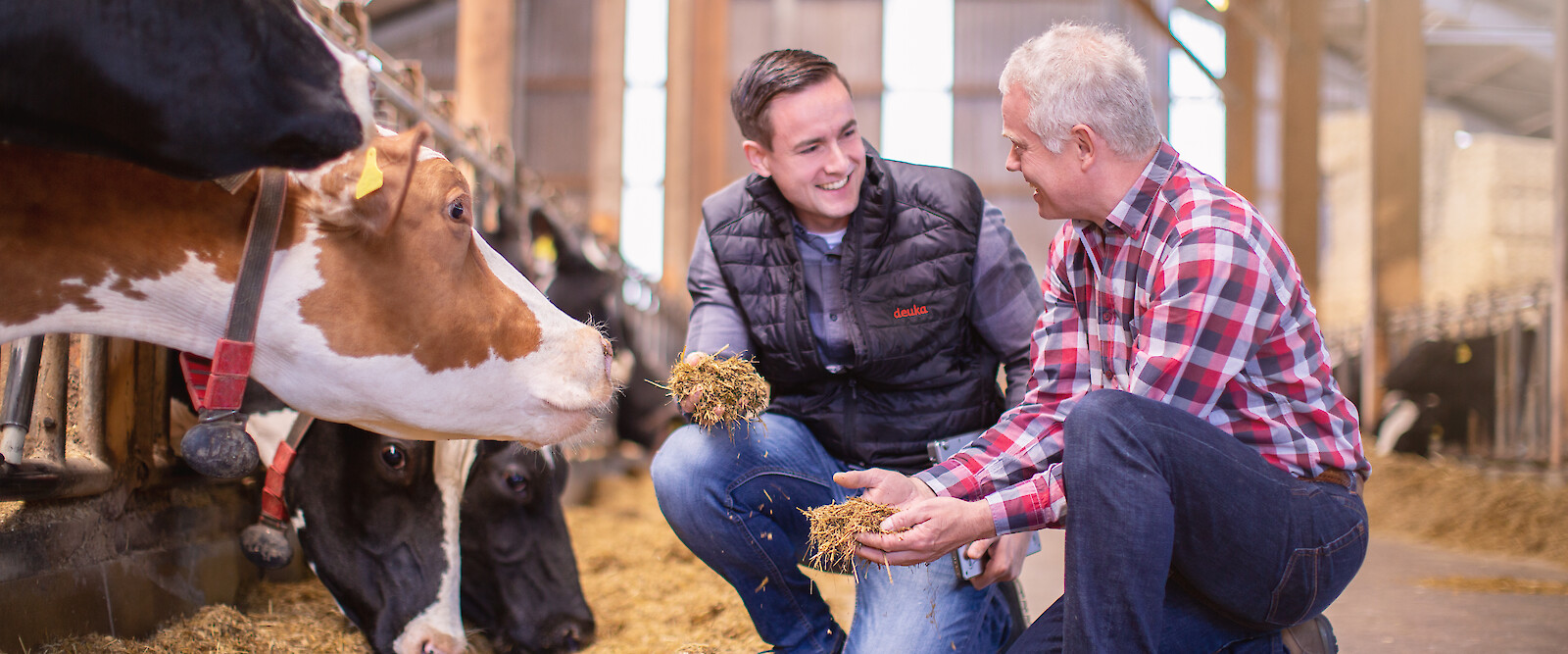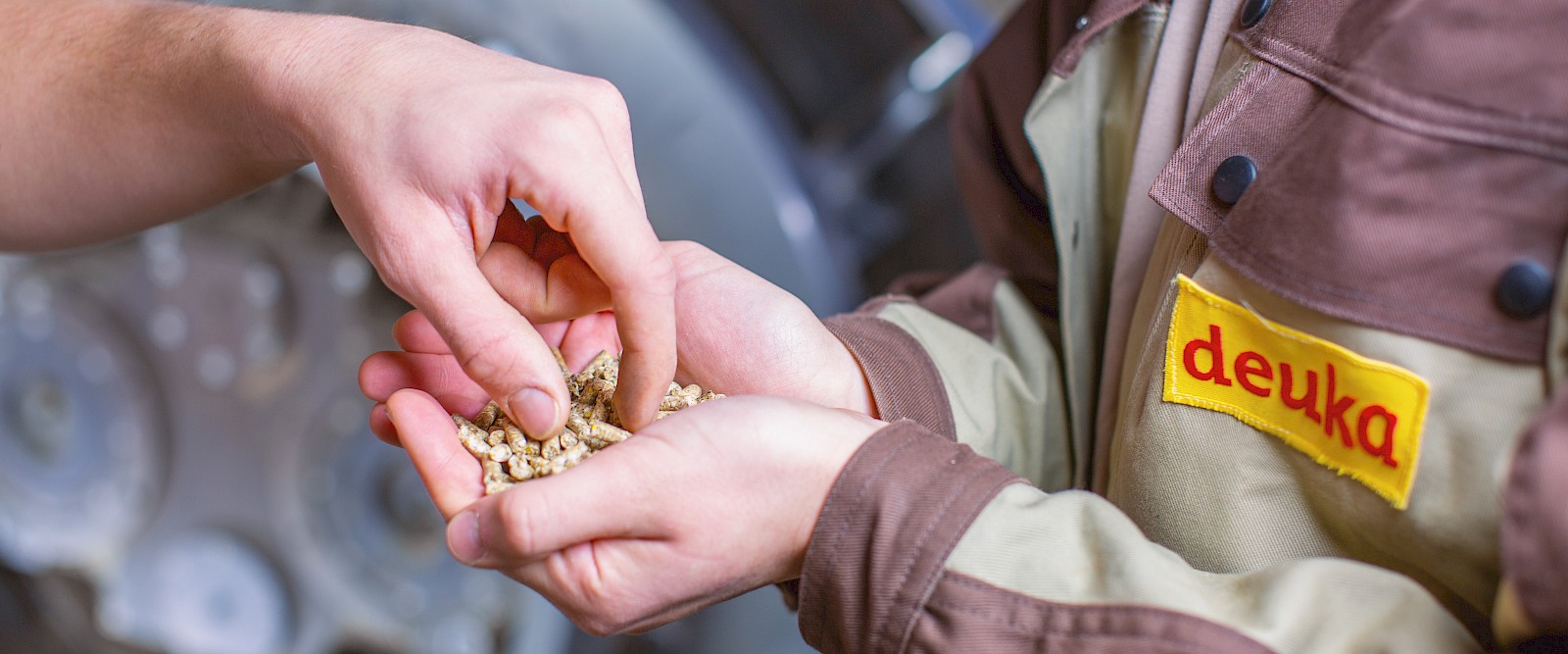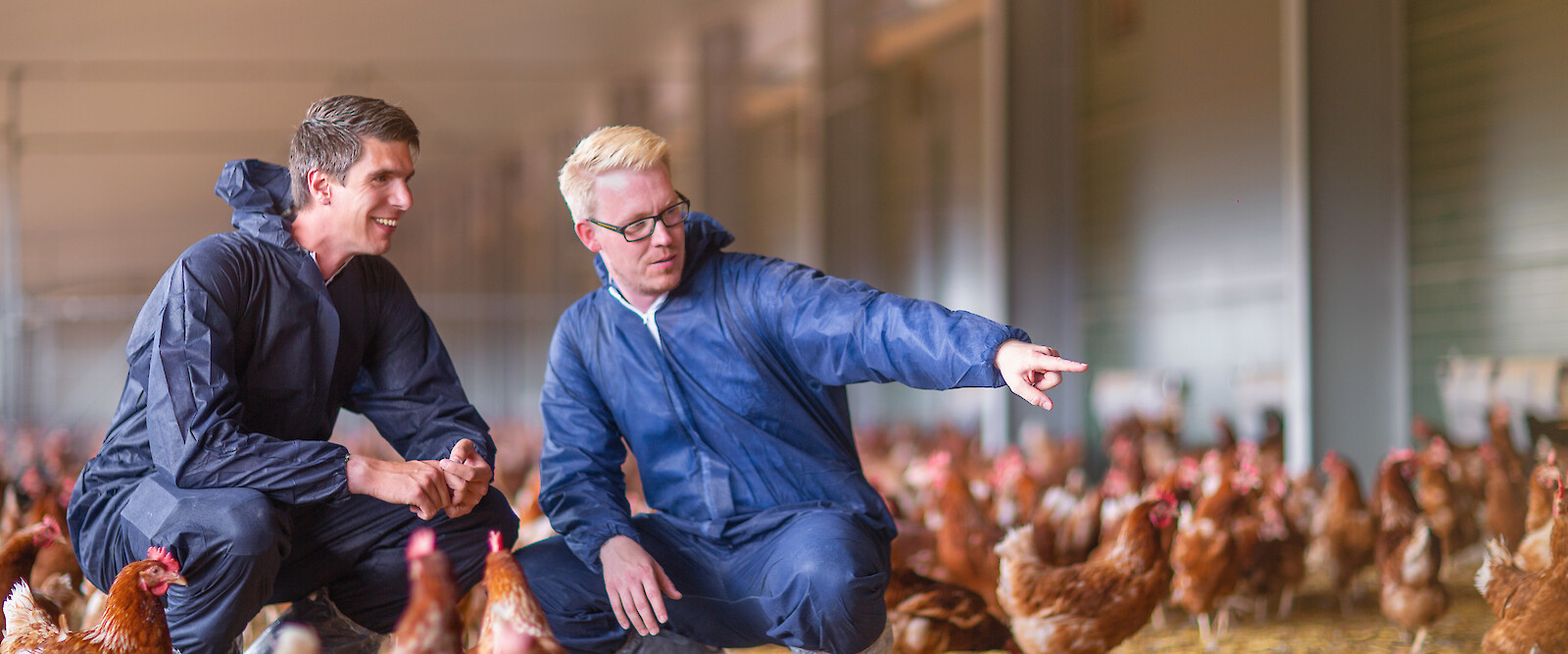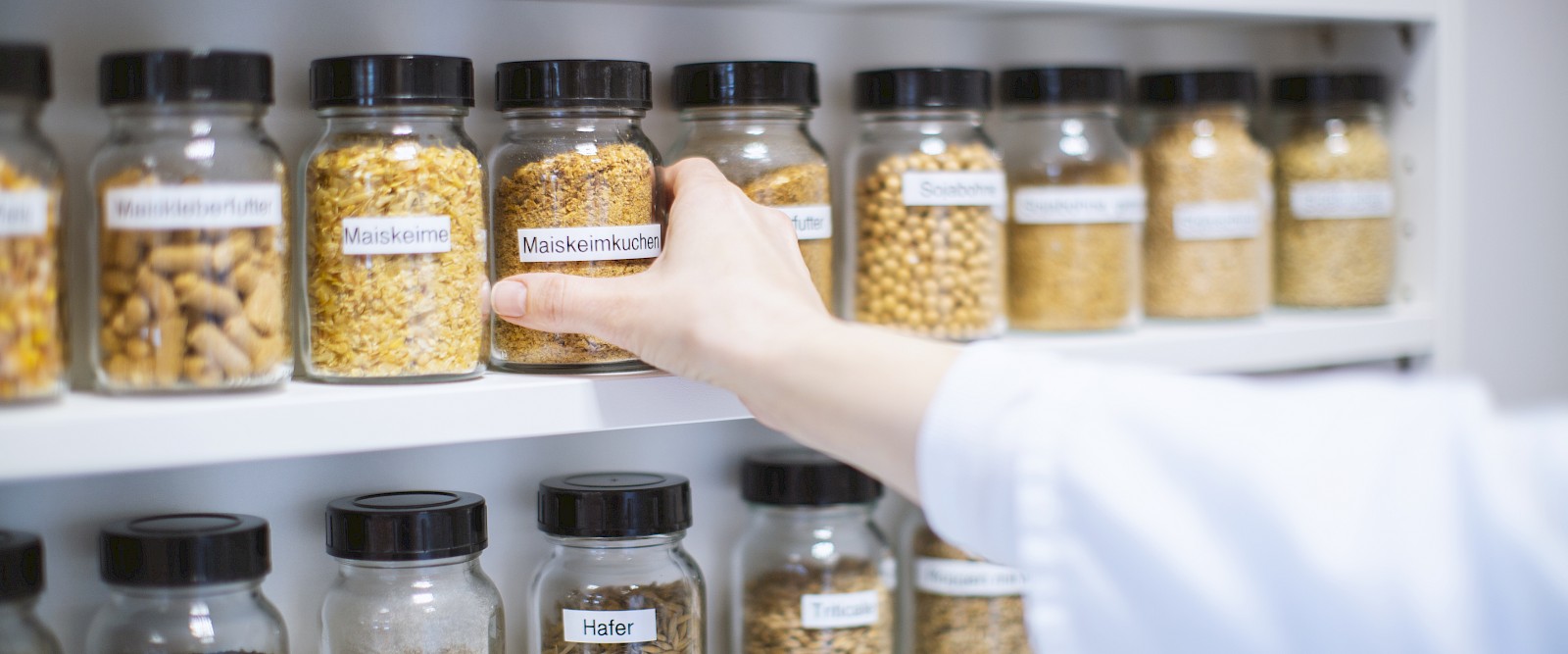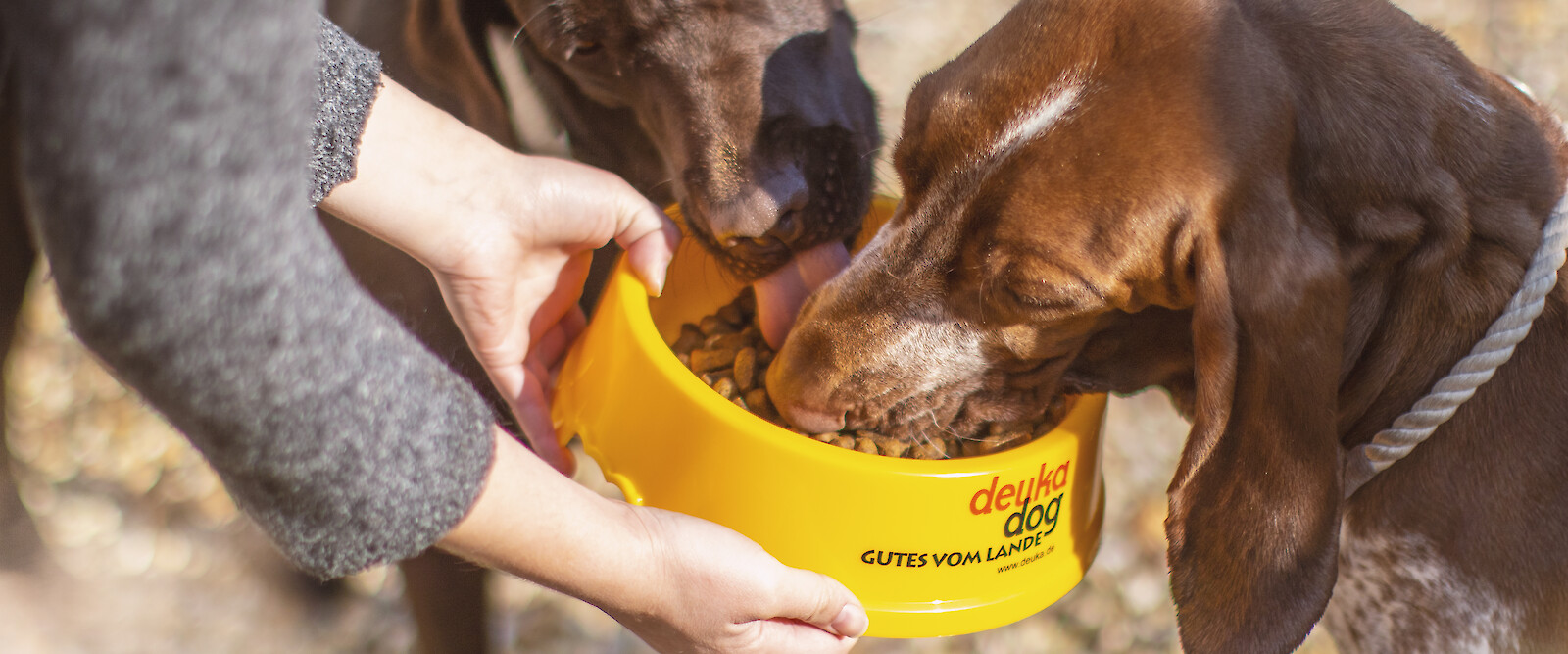Raw material and nutrient lexicon
Weitere Einträge
- Selenium
- Straight feed
- Skimmed milk powder
- Sodium
- Sodium chloride
- Complete feed
- Soy hulls
- Soy protein concentrate
- Soya extraction meal
- Soya oil
- Soybean
- Strength
- Structural value
- Sucrose
- Sugar
- Sugar beet molasses
- Sunflower extraction meal
- Supplementary feed
Structural value
For dairy cow feeding, the structure value represents a measure for evaluating the physical structure of the ration. On the one hand, the structure value system contains a dimensionless measure/relative number that reflects the effect of the individual feedstuffs and their properties on the fermentation processes in the rumen. On the other hand, the system provides requirement values for the structural supply of ruminants.
For the structural effect of the feedstuffs, particle length, specific weight, grinding resistance as well as the type and degradation rate of the carbohydrates are of decisive importance. The structure value system is also used to assess how the above feed properties affect salivation, the acid ratio in the forestomachs and the stratification of feed components in the rumen.
The structure values range from 4.30 per kg dry matter (DM) for straw to -0.11 per kg DM for wheat.
The total ration for dairy cows should contain a structural value (SW) of at least 1.00 per kg dry matter as a target value. The minimum structural value to be maintained is influenced by the performance level, the fat content of the milk and the type of concentrate feed. Therefore, the following table shows the required minimum structural values (MC) per kg dry matter of the total ration*, staggered according to milk yield and fat content
Milk quantity,
|
15 |
25 |
35 |
45 |
3.6% fat
|
0,94 |
1,04 |
1,14 |
1,24 |
*with more than 5 portions of concentrate per day or TMR, the requirements in the SW are reduced by 0.1.
For practical application, it is advisable to use figures for the critical range at the beginning of lactation. In the case of usual feeding via automatic concentrate feeders or TMR, the SW should not fall below a value of 1.1. In addition, the proportion of concentrate in the total ration should not exceed 60 % of the dry matter in order to avoid an undersupply of coarse feed in old milking animals and to ensure additional security in the ration design.
